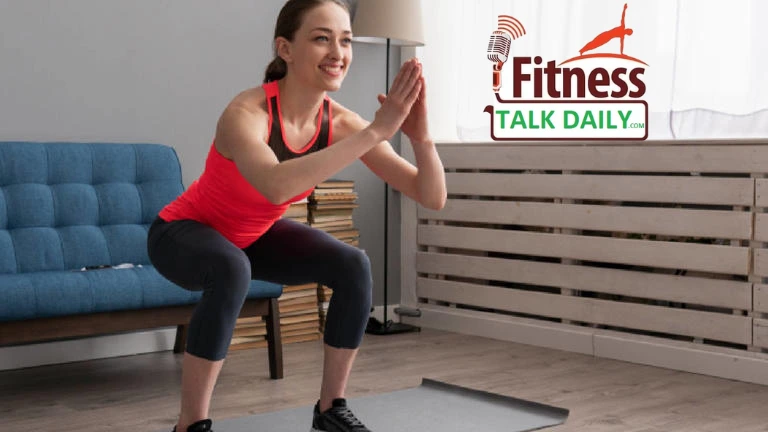Functional fitness training isn’t just about burning calories; it’s about preparing your body for real-life activities. Whether it’s carrying groceries, climbing stairs, or playing sports, these exercises enhance strength, flexibility, balance, and endurance. Unlike isolated workouts, functional training focuses on multi-joint movements that engage multiple muscle groups at once.
What is Functional Fitness Training?
Functional fitness training involves exercises that mimic real-life movements, making daily tasks easier while improving strength, mobility, and endurance. According to fitness expert Dhruva Sivakumar, this workout incorporates elements of strength, agility, flexibility, and coordination to enhance overall physical performance.
Benefits of Functional Fitness Training
| Benefit | Description |
|---|---|
| Improves Daily Life Activities | Helps with bending, lifting, and reaching efficiently. |
| Strengthens Core Stability | Enhances posture and reduces injury risks. |
| Increases Flexibility and Mobility | Reduces stiffness and supports joint health. |
| Enhances Neuromuscular Coordination | Improves balance and reaction time. |
| Engages Multiple Muscle Groups | Supports compound movements for full-body strength. |
11 Functional Fitness Training Exercises
1. Squats
Why it works: Strengthens legs, glutes, and core for daily movements like sitting and standing.
How to do it:
- Stand with feet shoulder-width apart.
- Lower your body by bending knees and hips.
- Keep your back straight and chest up.
- Push through your heels to return to standing.
2. Medicine Ball Wood Chop
Why it works: Engages core and improves rotational strength.
How to do it:
- Stand with feet shoulder-width apart, holding a medicine ball.
- Rotate torso while lifting the ball diagonally.
- Bring the ball back down in a controlled motion.
- Repeat on both sides.
3. Lunges
Why it works: Enhances lower-body strength and balance.
How to do it:
- Step forward with one leg and lower your hips.
- Keep knees at a 90-degree angle.
- Push back to the starting position.
- Repeat on the other leg.
4. Deadlifts
Why it works: Builds hamstrings, glutes, and core stability.
How to do it:
- Stand with feet hip-width apart, holding weights.
- Hinge at your hips and lower the weight.
- Drive through heels to stand back up.
5. Bear Crawl Steps
Why it works: Improves coordination and strengthens core.
How to do it:
- Start on hands and knees.
- Lift knees slightly off the ground.
- Move forward by alternating hands and feet.
- Maintain core engagement.
6. Push-Ups
Why it works: Strengthens upper body and core.
How to do it:
- Start in a plank position.
- Lower chest toward the floor.
- Push back up while keeping your body straight.
7. Pull-Ups
Why it works: Targets back, arms, and shoulders.
How to do it:
- Grip the pull-up bar with an overhand grip.
- Pull your chin above the bar.
- Lower yourself slowly to the start position.
8. Farmer’s Walk Steps
Why it works: Builds grip strength and core endurance.
How to do it:
- Hold a dumbbell in each hand.
- Walk forward, keeping good posture.
- Engage core and control breathing.
9. Russian Twists
Why it works: Strengthens obliques and improves rotational control.
How to do it:
- Sit with knees bent, lean back slightly.
- Rotate torso side to side, holding a weight.
10. Planks
Why it works: Enhances core strength and stability.
How to do it:
- Start in a forearm plank position.
- Keep body straight from head to heels.
- Hold the position for 30-60 seconds.
11. Kettlebell Swings
Why it works: Develops explosive power and endurance.
How to do it:
- Stand with feet wider than shoulder-width apart.
- Hinge at hips and swing the kettlebell forward.
- Let it swing back down in a controlled manner.
Safety Tips for Functional Fitness Training
- Warm-up and cool down: Prevents muscle stiffness and injury.
- Focus on proper form: Prioritize technique over weight.
- Progress gradually: Increase intensity step by step.
- Avoid overtraining: Listen to your body and rest when needed.
Potential Risks to Keep in Mind
| Risk | How to Prevent It |
| Poor form | Learn correct techniques before adding weight. |
| Overuse injuries | Rotate exercises to avoid strain. |
| Improper breathing | Focus on controlled breathing techniques. |
Final Thoughts
Functional fitness training enhances strength, flexibility, and endurance while preparing your body for real-life movements. Unlike isolated exercises, these workouts engage multiple muscle groups, making them essential for long-term health and injury prevention. Incorporate these 11 exercises into your routine and experience improved mobility, stability, and overall wellness.




